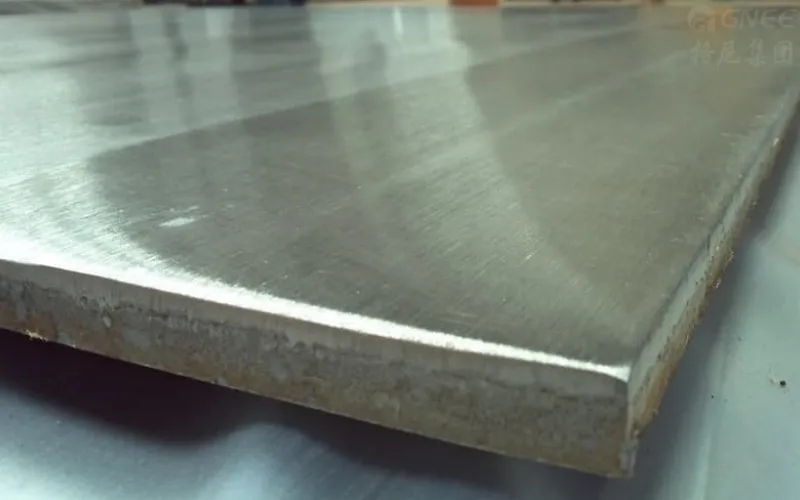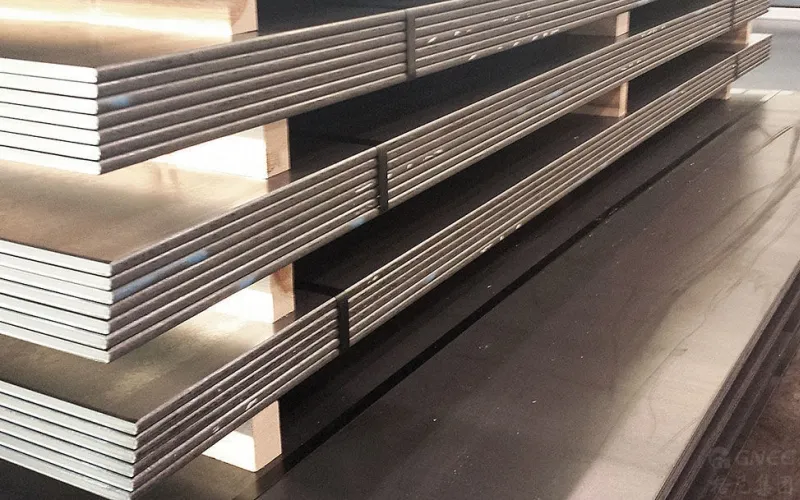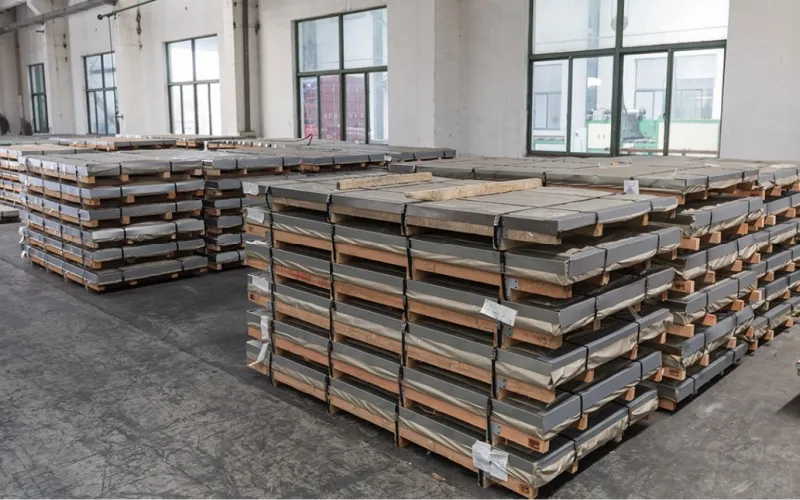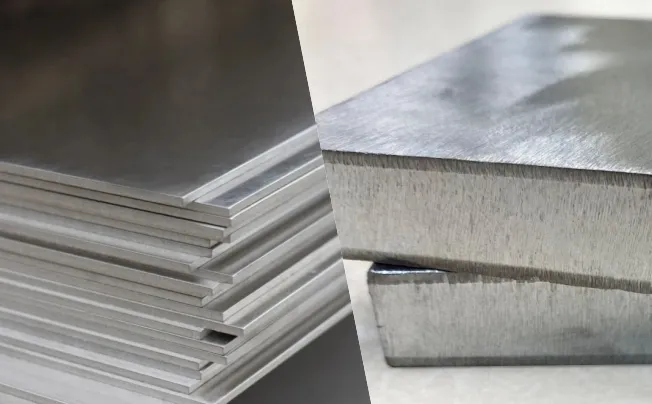Difference Between Stainless Steel Plate and Stainless Steel Clad Plate
Generally speaking, the differences between stainless steel plate and stainless steel clad plate mainly lie in definition, manufacturing process, performance, usage, cost, etc. It is imperative to grasp these distinctions to make an informed decision about which material to choose.
1. Definition
Stainless steel plate, is a flat and rectangular steel product that contains a minimum of 10.5% chromium content. This chromium forms a protective layer on the surface, safeguarding it against corrosion and augmenting its durability. Furthermore, stainless steel plate may also incorporate other elements such as nickel, manganese, and molybdenum, which contribute to its strength and resistance against heat, chemicals, and wear.
Stainless steel clad plate, on the contrary, is a composite material formed by joining a layer of stainless steel plate to a base metal plate (carbon steel, alloy steel, or other metals) through a process called diffusion bonding. This process involves the application of heat and pressure, thereby creating a bond of the utmost strength and permanence between the two materials.

2. Manufacturing Process
Stainless steel plate is made of stainless steel.
However, the manufacturing process of stainless steel cladding plates is much more complicated. It is often constructed by joining a layer of stainless steel, typically 5-10% of the total thickness, to a base metal layer through heat and pressure. This bonding process allows the atoms of the two materials to diffuse and form bonds of a metallurgical nature.
In short, stainless steel clad plates have a layer of stainless steel bonded to a base metal, while stainless steel plates are solely made of stainless steel.
3. Performance
It can be embodied in the following three aspects:
Corrosion Resistance: stainless steel plate has better corrosion and rust resistance than stainless steel clad plate due to its pure stainless steel materials. The higher the grade of stainless steel, the greater its corrosion resistance.
Durability: it must be admitted that stainless clad steel plate has higher durability as the base metal plate does offer strength and mechanical properties of a structural nature.
Flexibility: stainless steel clad plate has less flexibility. It includes the risk of delamination or separation between the stainless steel layer and the base material. This can occur due to inadequate bonding or thermal expansion and contraction. Therefore, it is less flexible than stainless steel plate.

4. Usage
The usage difference between stainless steel clad plates and stainless steel plates hinges upon the intended application and the precise requirements at hand. Industries such as petrochemical, chemical, power generation, architecture, and automobiles, commonly turn to stainless steel clad plates, as they necessitate a blend of strength, corrosion resistance, and cost-effectiveness. Conversely, stainless steel plates find their purpose across a myriad of sectors, including food processing, pharmaceuticals, and architecture, where superlative resistance to corrosion and aesthetic allure reign supreme.
5. Cost
Because of its composite nature, stainless steel clad plates offer the most advantageous cost savings when compared to solid stainless steel plates. The utilization of a more affordable base metal, coupled with a thinner layer of stainless steel, yields a more economical solution while still delivering the desired performance. However, the precise disparities in cost hinge upon variables such as plate size, thickness, and the specific type of stainless steel employed.

Conclusion
Although many differences exist between stainless steel plates and stainless steel clad plates, they are still indispensable steel materials used in modern industrial society. Stainless steel cladding plates are more durable than stainless steel plates, whereas stainless steel plates have stronger corrosion resistance than stainless steel composite plates. And each has its specific application range. As for which material is better for you, it depends on your specific needs. If you still have some doubts, welcome to contact our professional team for help.


